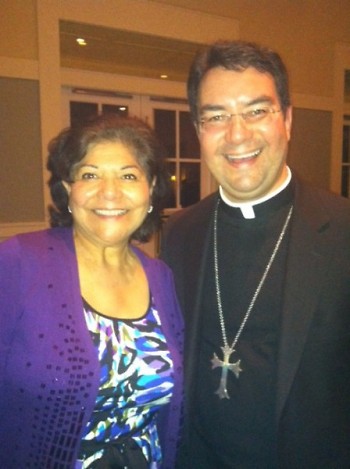Choosing from the various school options goes beyond which school has the best test scores. It has more to do with where a student can achieve their own personal best.
Fifty years ago choices for educating students through twelfth grade were limited. Parents could send their children to public school or a private school, either parochial or for the few elite, a non-parochial private school. Added to those choices today are charter schools, internet schools and home schooling.
Lump theses options together and, in business terms, they are all delivery systems. In this case they are delivery systems of education. Much like FedEx, UPS and the US Postal Service all deliver packages. Who delivers those packages the best depends on who you ask and what that person’s priorities are.
To be expected, the most vocal critics of each educational delivery system are typically the competition. Equally as expected, is that each is their own greatest proponent. To be fair each has its advantages and disadvantages.
The measurement for school success inevitably comes down to student test scores. From there the arguments rage on about whether one educational institution has an unfair advantage over another in its student population. Inevitably one school will say that it takes every student and that their competition picks only the best; putting it at a disadvantage when comparing scores.
If, however, a school demands more of students, does that skew the results? Some students may do better while others fall further behind because they are unable to keep pace. Do those students eventually transfer to other, less challenging schools? Or do they drag down test scores at the school they are in? Or, do their scores improve beyond where they would be in another school?
The Khan Academy has received a lot of press lately (see 60 Minutes article). It is a hybrid in that it combines internet instruction assisted by teachers in classrooms. For parents focusing on test scores the Khan Academy is an attractive alternative.
Is it beneficial, though, to make test scores the measure of a school’s success? There will be inevitable discrepancies in scores. There will also be anomalies in student attendance.
Perhaps it is more valuable to measure the steady improvement of test scores. Schools that can take a child from one test score to three grade levels higher in a semester or two are successful. Schools that do this year in and year out with every student, no matter where they scored at first, these are the schools that we should be rushing to support and emulate.
Finding the school that is able to meet the needs of their child including – but beyond – academics, is a better choice in special cases. For example, San Juan Diego Academy has chosen to address the needs of recently immigrated Latino families.
The Most Reverend Oscar Cantu, Auxiliary Bishop of the Archdiocese of San Antonio met recently with San Juan Diego Academy Principal Rosa Fraga at a Catholic schools conference hosted by the University of Notre Dame. Cantu grew up in a hard-scrabble Houston neighborhood with his seven siblings and Mexican immigrant parents. He remembers taking a white station wagon – “the Cantu-mobile”-- to Mass. The young Oscar would vie for the window seat so he could be the first to see the beautiful twin spires of the church as they rounded the block toward church. That church, that pastor and the school they supported changed Cantu’s lives.
“The pastor and the parish reached out to my parents,” recalls Archbishop Cantu. “In those days, the public school environment in Houston was corrosive,” Cantu recalls.
The pastor knew this and told the Cantus to send all eight children to his Catholic School and to pay what they could. Today, the Cantu children are educators, bankers, accountants, medical practitioners, and one bishop.
The lack of educational attainment among Latinos in US schools is a gathering storm, Cantu, says. The trajectory of a fast growing Latino population coupled with a lack of educational attainment; portend a “descent into darkness” for the United States.
Delivering education in a classroom is not uncommon. Delivering it to a specific demographic is far less common. Much like FedEx serves a specific market, customers that want their package delivered overnight, San Juan Diego Academy has chosen to serve Latino children.
Beyond test scores is the personal touch that can make a difference in whether a child succeeds or not. The statistics are startling. The US Census and the University of Notre Dame report that 47% of all Latino children attending public school drop out before graduating. However, 98% of the Latino children in Catholic schools stay on to graduate.
Sadly, that is very few because only 3% of Latino children actually attend Catholic schools.
At San Juan Diego Academy, a school of 130 students in Wyoming, MI., test scores can be all over the map. What is consistent, though, is steady improvement. A 7th grader reading at 10th grade level progresses to college level in one year. A 5th grader entering at 3rd grade math is achieving at grade level by year’s end.
Like most public schools today, San Juan Diego Academy uses MAPS testing. This year, 99% of the upper-classmen increased their reading scores by at least one grade level and some even as much as 2 ½ years. Eighty-five percent of the students increased their math scores by a grade level.
What turns Catholic education into “specialty” education for Latino children? That is the topic of ongoing study. We only know that it works.
The Rapidian, a program of the 501(c)3 nonprofit Community Media Center, relies on the community’s support to help cover the cost of training reporters and publishing content.
We need your help.
If each of our readers and content creators who values this community platform help support its creation and maintenance, The Rapidian can continue to educate and facilitate a conversation around issues for years to come.
Please support The Rapidian and make a contribution today.
Comments, like all content, are held to The Rapidian standards of civility and open identity as outlined in our Terms of Use and Values Statement. We reserve the right to remove any content that does not hold to these standards.


